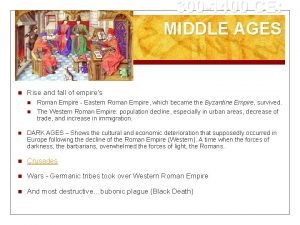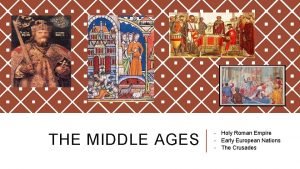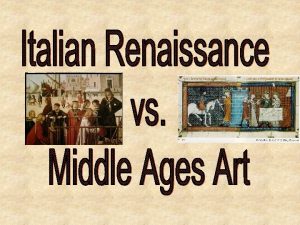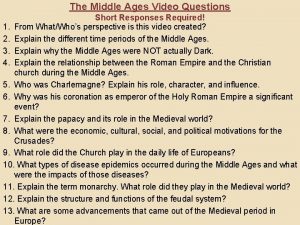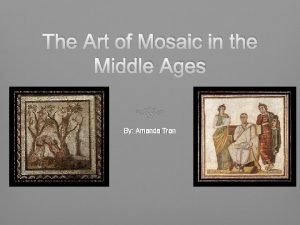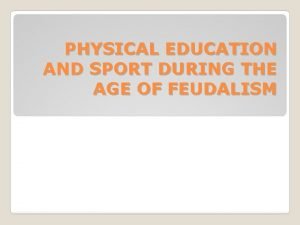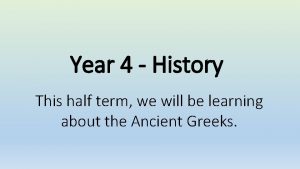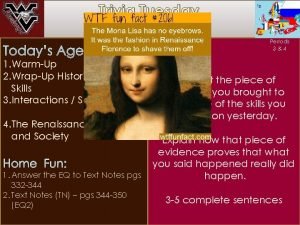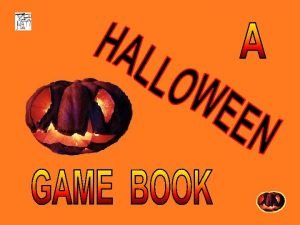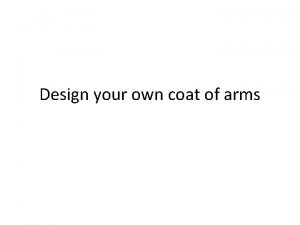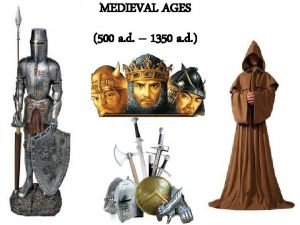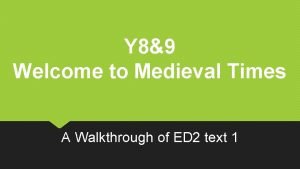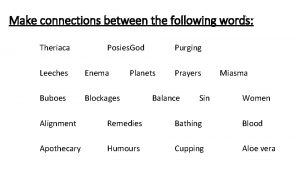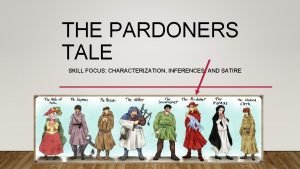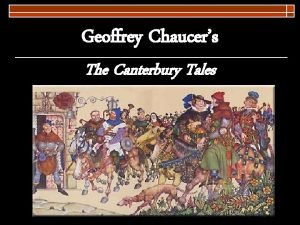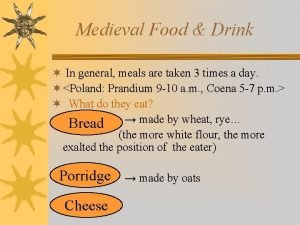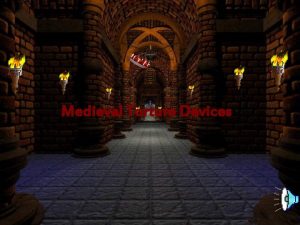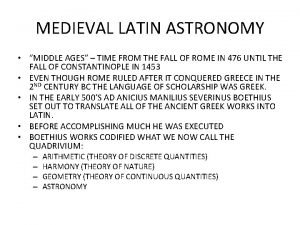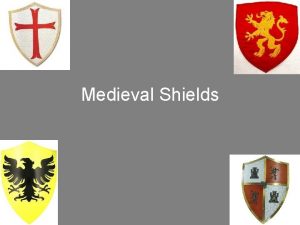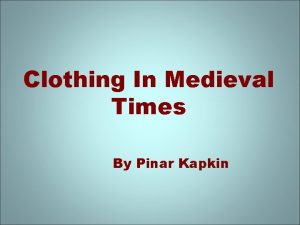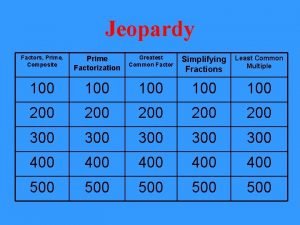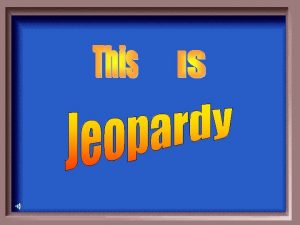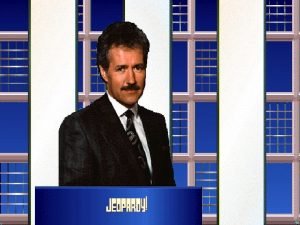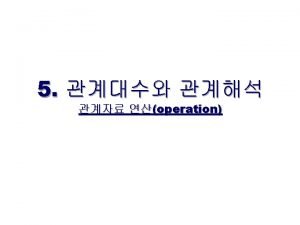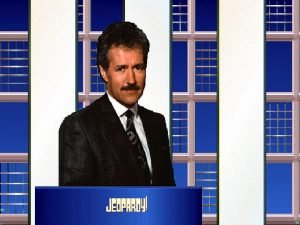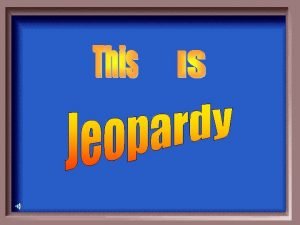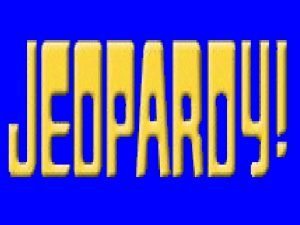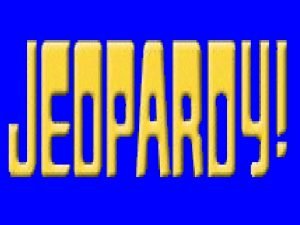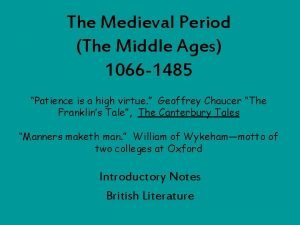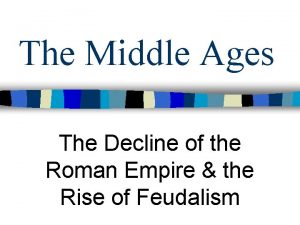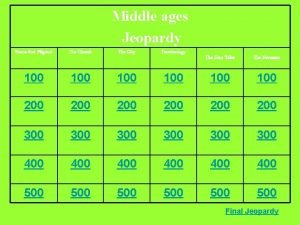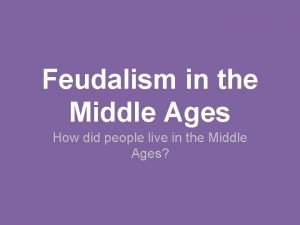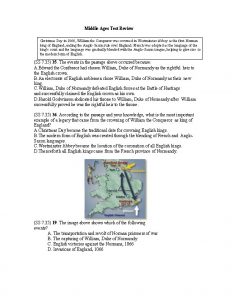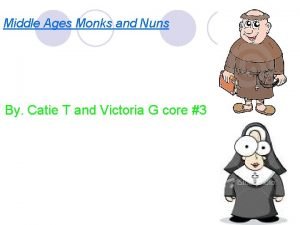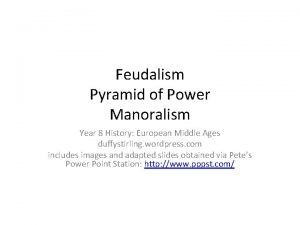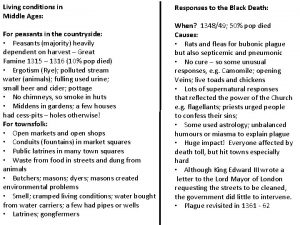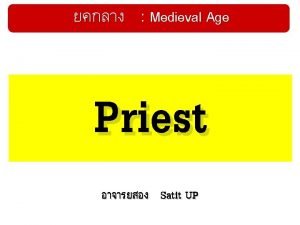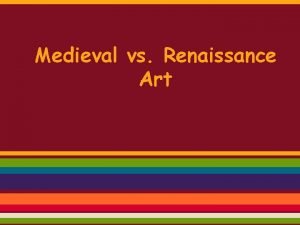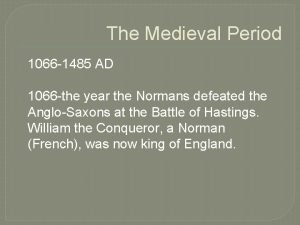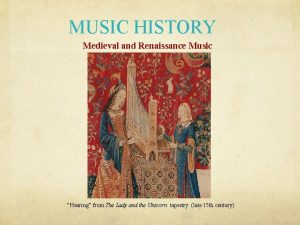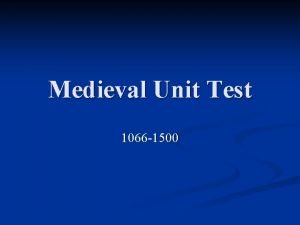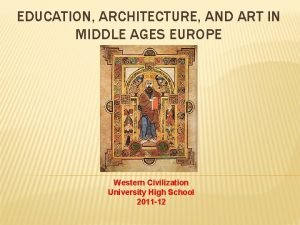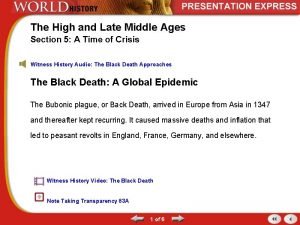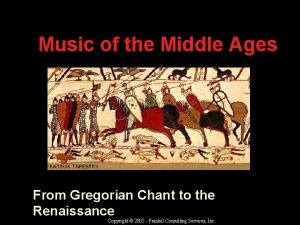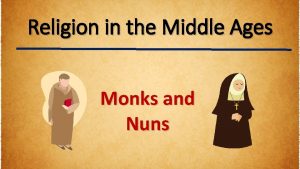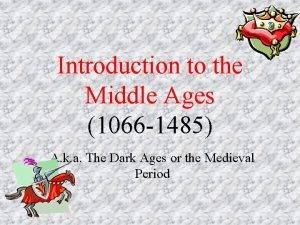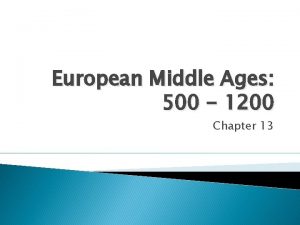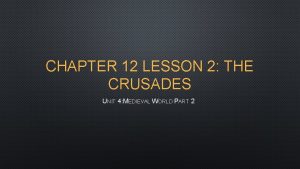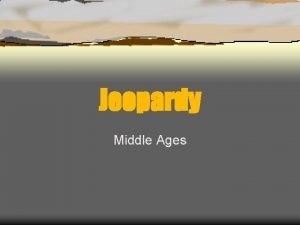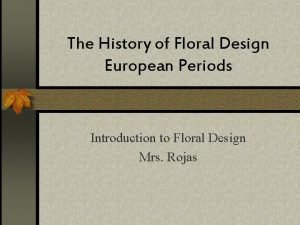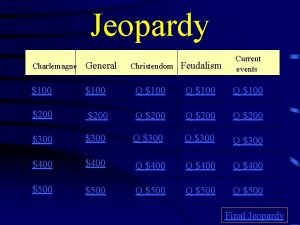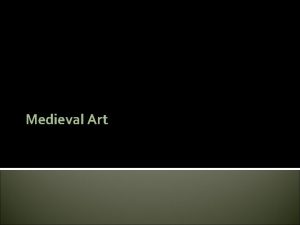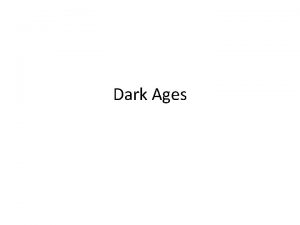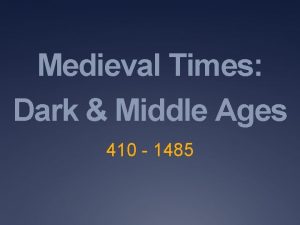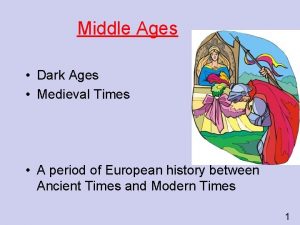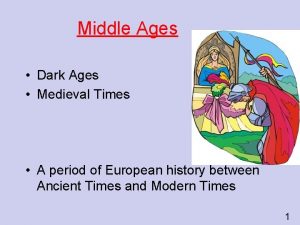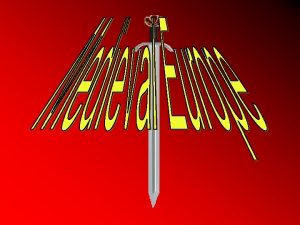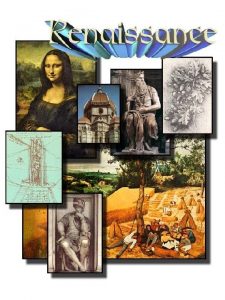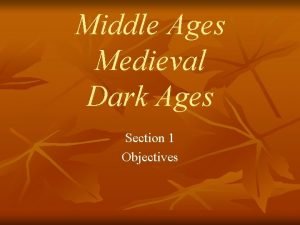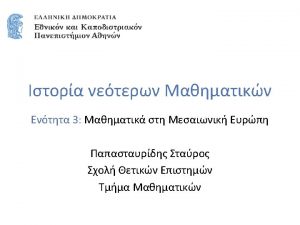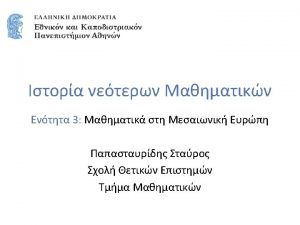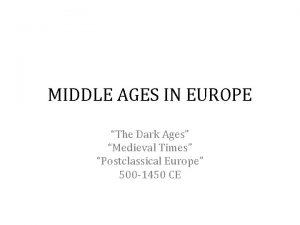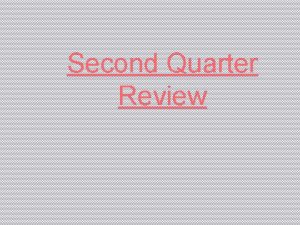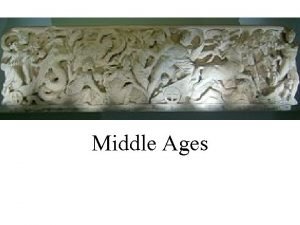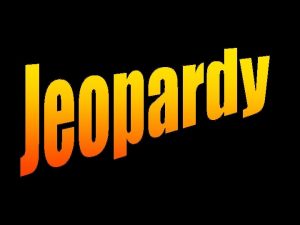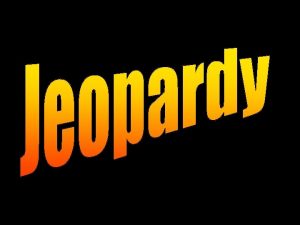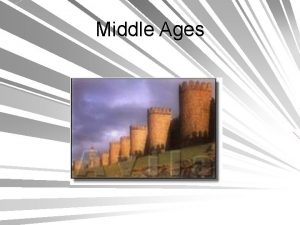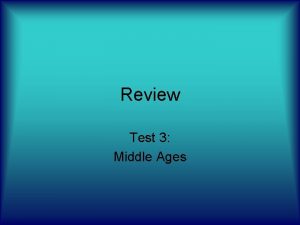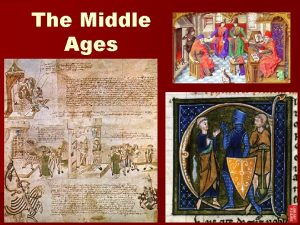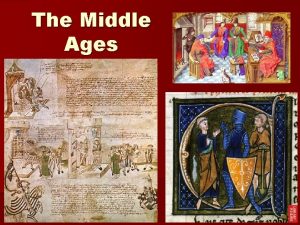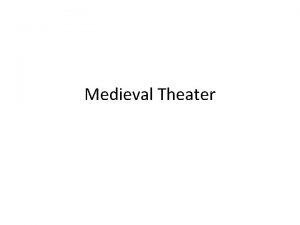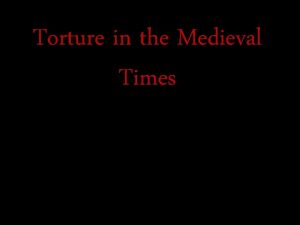300 1400 CE MIDDLE AGES MEDIEVAL TIMES DARK



































































- Slides: 67

300 -1400 CE MIDDLE AGES MEDIEVAL TIMES » » » DARK AGES – Rise and fall of empire's Crusades Wars And most destructive…


� 1300’s – 1/3 of population of Europe died �Began in Asia by traveling on trade routes through the Muslim world and Europe (fleas on rats) �Effects of Plague: � Trade declined � Population declined � Church suffered because prayers failed � Jews blamed and pushed out Of towns and homes. BUBONIC PLAGUE = BLACK DEATH



» SS-HS-5. 3. 1 Students will explain how humans began to rediscover the ideas of the Classical Age (e. g. , humanism, developments in art and architecture, literature, political theories) and to question their place in the universe during the Renaissance and Reformation. DOK 2 CORE CONTENT

» I can identify and explain Renaissance advances in architecture and engineering, painting, sculpture, literature, science, and mathematics. . » I can discuss the factors that made Florence an important cultural center during the Renaissance. » I can explain how various advances made during the Renaissance reflect humanist thinking and ideals. I CAN …. .

» Renaissance is a French word meaning “Rebirth”. » The Renaissance was a cultural awakening that began in Italy and spread throughout Western Europe. » It lasted from 1350 until 1600. » Before the Renaissance, Europe was in the Dark Ages. » The Crusades helped bring Europe out of the Dark Ages. – HOW? Renaissance

PREVIEW

» Section 2, What Was the Renaissance? , in your Student Text provides background information on the causes of the Renaissance. » Read the section and then complete Part 1 of the Reading Notes by filling in the cause-andeffect chart in your notebook. Section 2 -


» As you read the subsection in your book entitled “Exploring the Rebirth of Classical Ideas Through Art, ” fill in the first two rows of the matrix below. PART 2


» Part 3 » Once your teacher projects Visual B, examine three images and fill in the this chart by doing the following. » Decide in which period each artwork was created. Write the period and letter of each work in the correct row. » List three or more characteristics from Section 2 that led you to your decision.





» LET’s Practice – what are the following pictures? » CLASSICAL » MEDIEVAL o. R RENAISSANCE » AND WHY?

RENAISSANCE

MEDIEVAL

CLASSICAL

» This fishbone diagram is used to show several causes for one effect. Follow the directions in the last question for each section to complete this diagram about some different events or developments that led to the start of the Renaissance. COMPLETE SECTIONS 3 -5

» 1. In the 13 th century, Mongol conquests made it safe to travel along the Silk Road. Marco Polo’s travels sparked a greater interest in the East, and helped encourage the transport of food, art, and luxury goods along the trade route. SECTION 3

2. An increase in trade led to a new, money economy. It also helped craftspeople, merchants, and bankers become more important in society. 3. Factor: The Growth of Trade and Commerce Merchants and bankers grew wealthy and could afford to pay for new buildings and art to beautify their cities. Growing trade meant that more classical texts, art, and artifacts were passed along trade routes, sparking interest in classical culture.

3. Factor: The Influence of Italian City. States » Their wealth encouraged a growth in art and learning. Rich families supported (called patrons) the creation of art, new buildings, and centers of learning, such as universities and hospitals.

» 1. Italian city-states were powerful cities in Renaissance Italy that ruled the surrounding towns and countryside. They were independent and were often republics governed by elected councils. Sometimes, in reality, they were ruled by rich merchants, guilds, or powerful families like the Medici

» 2. Because of their central Mediterranean location, Italian citystates became major centers of trade and business.

» Section 5 » 1. Renaissance humanists believed that people could shape their own lives and achieve great things. » 2. Renaissance humanists studied classical art, architecture, government, history, poetry, and language.

» 3. The Church taught that laws were made by God and required people to follow its » teachings without question. It » also emphasized life after death as opposed to life on Earth. Renaissance humanists believed that people should question everything, and tried to balance religious faith with an active interest in human existence. Factor: The Growth of Humanism 4. People began to change their ideas about many things, such as government, social class, and religion. They tried to improve upon the art, architecture, and ideas of the classical period, which led to new discoveries, new ways of studying things, and new inventions in many areas of life.

1. War – As they traveled to Jerusalem, the crusades exposed Europeans to more advanced civilizations and cultures. 2. Trade – Northern Europe merchants after a while became successful enough to be able to afford education, fine housing, and material goods. They began to travel to Italy. 3. The Invention of the Printing Press – The printing press spread knowledge among the middle class. Gutenburg invented the printing press. Books were produced more quickly and less expensively. Reasons for the spread of the Renaissance

MOST FAMOUS PATRON » Famous banking family in Florence that controlled the city (produced 4 popes) » Cosimo –began the political control and wealthiest man in Europe » Lorenzo the Magnificant –(grandson) greatest patron of all – Supported da Vinci and Michaelangelo

» Writers started writing in their own vernacular (own language) instead of Latin » Wrote about self expression or indiviuals instead of religion » Petrach – father of Humanism Italian poet RENAISSANCE LITERATURE -

CHRISTIAN HUMANISTS » Erasmus – wrote The Praise of Folly which poked fun at greedy merchants » Thomas More – wrote Utopia -which is an ideal place

Dante Alighieri 1265 -1321 » Italian poet that wrote Divine Comedy considered the greatest literary work composed in the Italian language and a masterpiece of world literature. » Father of Italian Language ,


» 1564 -1616 Shakespeare

» Greatest writer in the English language » Deep understanding of human beings » Revered the classics – greatest tragedies – Julius Caesar » Romeo and Juliet, Hamlet, Macbeth All the world's a stage, and all the men and women merely players: they have their exits and their entrances; and one man in his time plays many parts Shakespeare, in love?

» Good night, good night! Parting is such sweet sorrow, That I shall say good night till it be morrow O Romeo, wherefore art thou Romeo? Deny thy father and refuse thy name; Or if thou wilt not, be but sworn my love And I'll no longer be a Capulet To be, or not to be, that is the question:

Niccolo Machiavelli 1469 -1527 » Poet, philosopher, diplomat » Wrote The Prince – ruler gains power and keeps it – trick his enemy and his own people » Looks at imperfect human conduct

Renaissance Man


» From this arises the question whether it is better to be loved or feared rather than loved. It might perhaps be answered that we should be both: but since loved and fear can hardly exist together if we must choose between them it is far safer to be feared than loved Feared or loved?

» A prince should make himself feared in a way that if he does not gain love he at any rate avoids hatred But don’t go overboard

» Machiavelli says that it is acceptable to be immoral as long as stability and power are maintained. Christian morality should only be followed as long as it is the most prudent way to stay in power, and should be abandoned if it is not. The ends justify the means

» A prince, though he should not be hated, should use deception to rule his people. However, he must appear to be the opposite of devious, to win the goodwill of the people. Goodwill VS Hatred

» Machiavelli suggests that humans are never satisfied with what they have and that they willingly change their ruler, hoping for a better one. He also says that humans judge by physical appearance and attack one another if they feel hatred or fear of the other person. Human Nature

Leonardo Da Vinci

» Born in Vinci & lived in Florence Italy. » Considered a Renaissance MAN – artist, Inventor, mathematician, engineer, architect, scientist » In his notebook, he designed: ˃ ˃ ˃ Parachute Flying machine Scuba gear Tank Theory of plate tectonics Human anatomy (1452 – 1519)

The Last Supper The painting represents the last meal shared by Jesus with his disciples before his capture and death. It shows specifically the moment when Jesus has said "one of you will betray me" The Mona Lisa • Famous for her smile • His paintings showed depth, perspective, distance, Nature, lifelike, realistic, dramatic landscape background MONA LISA Perspective Playing Around with Size and Distance Investigating Aerial Perspective Most Famous Works



Michelangelo (14751564)

» Italian sculptor, painter, architect, poet and engineer » One of the greatest painters of all time » Hired by Lorenzo de Medici » The Divine Michelangelo Buonarroti

» 1499 » depicts the body of Jesus on the lap of his mother Mary after the Crucifixion » Balances Renaissance with Classical beauty » Located in the Vatican Pieta

• Made of all marble • Statue of King David DAVID (1501 -1504)

» 1508– 1512 » Pope Julius II commissioned Mike to paint the ceiling of the Sistine Chapel » 9 episodes from the book of Genesis Sistine Chapel


» Commissioned Michelangelo to paint the ceiling of the Sistine Chapel » Pope from 1503 -1513 » Nickname is “Terrible pope” POPE JULIUS II

• One of the most famous images of the world • Painted on the Ceiling of the Sistine Chapel • Depicts God the father breathing life into the first man, ADAM Creation of Adam (1511)



» Donatello. 1386 – 1466) Renaissance Italian artist and sculptor from Florence. His "Sculpture of David" was not only the first bronze sculpture, but also the first free-standing, nude statue of the Renaissance. TMNT DONATELLO


» an Italian painter and architect » Together with Michelangelo and Leonardo da Vinci he forms the trinity of great masters of that period. RAPHAEL (1483 -1520)

Most famous painting School of Athens

» & The Renaissance Report Renaissance Man
 Renaissance art vs medieval art
Renaissance art vs medieval art Dark ages vs middle ages
Dark ages vs middle ages 300/1400
300/1400 Holy roman empire def
Holy roman empire def Renaissance vs middle ages
Renaissance vs middle ages Dark ages video questions
Dark ages video questions Mosaic art in medieval period
Mosaic art in medieval period Physical education in dark ages
Physical education in dark ages Greek dark ages timeline
Greek dark ages timeline Dark ages def
Dark ages def American cyclopaedia dark ages
American cyclopaedia dark ages Middle ages renaissance
Middle ages renaissance Dark matter and dark energy ppt
Dark matter and dark energy ppt In a dark dark town
In a dark dark town Design your own coat of arms
Design your own coat of arms 1350 ad
1350 ad Welcome to medieval times
Welcome to medieval times Theriaca medieval times
Theriaca medieval times Medieval dialect translator
Medieval dialect translator What inference can be made about the pardoner
What inference can be made about the pardoner Irony in the pardoner's tale
Irony in the pardoner's tale Medieval times drink menu
Medieval times drink menu Shear torture
Shear torture Astronomy in medieval times
Astronomy in medieval times Medieval shields designs
Medieval shields designs What did lords and ladies wear in medieval times
What did lords and ladies wear in medieval times What are the prime factors of 500
What are the prime factors of 500 300+200+200+200
300+200+200+200 300+300+400
300+300+400 200 + 200 + 300
200 + 200 + 300 100 200 300
100 200 300 300+300+400
300+300+400 400 + 300 + 300
400 + 300 + 300 200 300 300
200 300 300 300+300+400
300+300+400 300 300 400
300 300 400 200 200 300
200 200 300 300 + 300 + 400
300 + 300 + 400 What the font
What the font Middle english period 1066-1500
Middle english period 1066-1500 Middle ages
Middle ages Middle ages jeopardy
Middle ages jeopardy Feudal system in the middle ages
Feudal system in the middle ages Christmas day 1066
Christmas day 1066 How is this
How is this Early american period floral design
Early american period floral design Sacred music in the middle ages
Sacred music in the middle ages Monks and nuns in the middle ages
Monks and nuns in the middle ages Fuedal pyramid
Fuedal pyramid Middle ages def
Middle ages def Living conditions in the middle ages
Living conditions in the middle ages The catholic church hierarchy pyramid
The catholic church hierarchy pyramid Middle ages
Middle ages The middle ages 1066 to 1485: unit test
The middle ages 1066 to 1485: unit test The middle ages spans nearly one thousand years.
The middle ages spans nearly one thousand years. The middle ages 1066-1485 unit test
The middle ages 1066-1485 unit test Education in middle ages
Education in middle ages The high and late middle ages section 5 quiz
The high and late middle ages section 5 quiz Gregorian chant middle ages
Gregorian chant middle ages Middle ages buildings
Middle ages buildings Monks and nuns in the middle ages
Monks and nuns in the middle ages The middle ages 1066 to 1485 unit test closed book
The middle ages 1066 to 1485 unit test closed book Eleanor of aquitine
Eleanor of aquitine Lesson 2 the crusades
Lesson 2 the crusades Middle ages jeopardy
Middle ages jeopardy Middle ages floral design
Middle ages floral design Middle ages jeopardy
Middle ages jeopardy Characteristic of medieval art
Characteristic of medieval art


